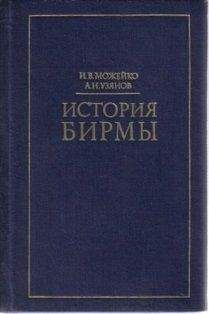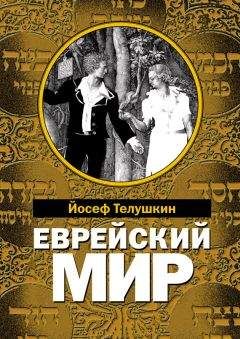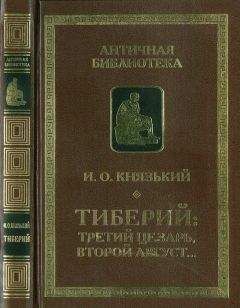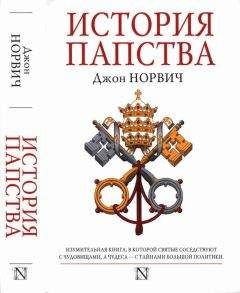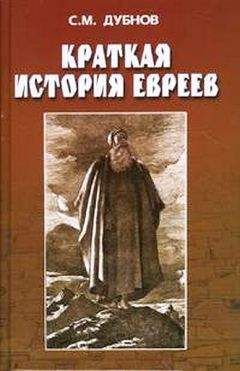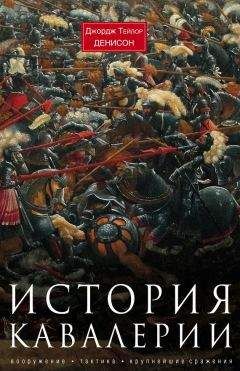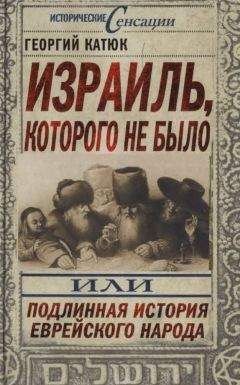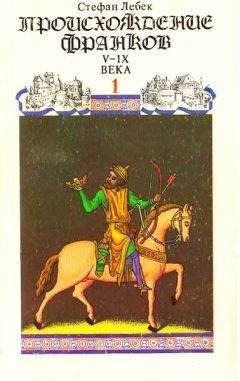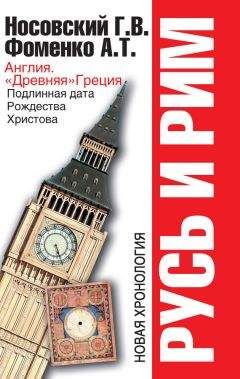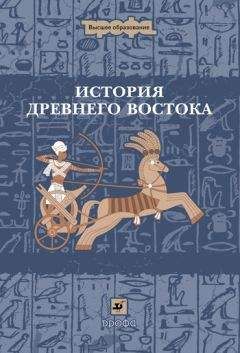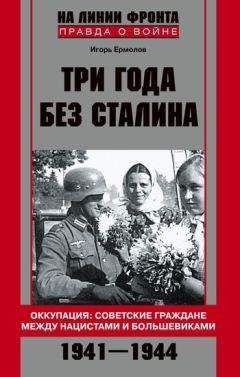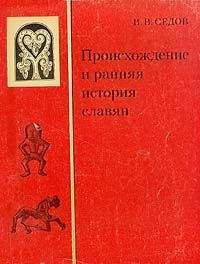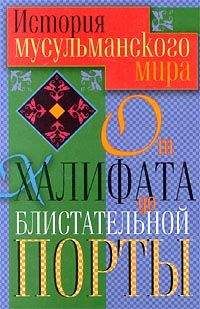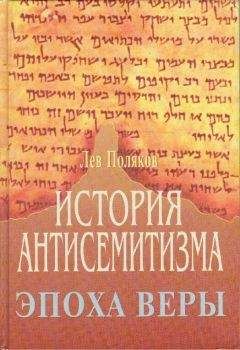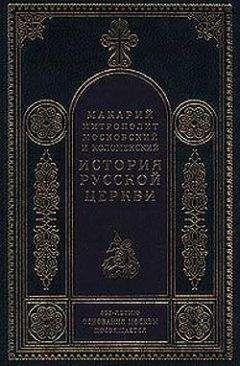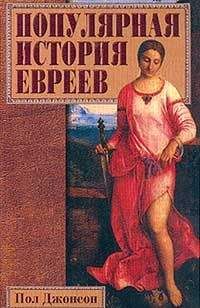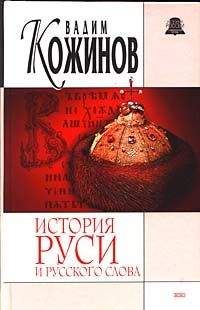Игорь Липовский - Библейский Израиль. История двух народов
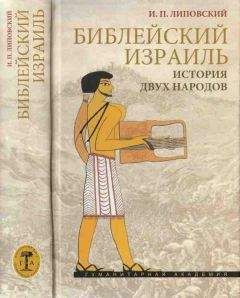
Скачивание начинается... Если скачивание не началось автоматически, пожалуйста нажмите на эту ссылку.
Жалоба
Напишите нам, и мы в срочном порядке примем меры.
Описание книги "Библейский Израиль. История двух народов"
Описание и краткое содержание "Библейский Израиль. История двух народов" читать бесплатно онлайн.
Книга известного востоковеда, профессора Бостонского университета И. П. Липовского посвящена наиболее загадочным и дискуссионным событиям библейской истории. На основе тщательного анализа ветхозаветных и древневосточных источников автор делает вывод о значительных культурно-исторических различиях между двумя группами древнееврейских племен — северными и южными коленами, что позволяет ему представить совершенно новый взгляд на происхождение древнего Израиля, эпоху патриархов, пребывание евреев в Египте, Исход, а также на завоевание евреями Ханаана.
Охватывая в своем фундаментальном исследовании период почти в полторы тысячи лет — от патриарха Авраама до разрушения первого Иерусалимского Храма, И. П. Липовский находит подтверждение многим фактам, изложенным в Библии, и в то же время его труд лишний раз доказывает, что подлинная история всегда оказывается несравненно богаче и многограннее, чем ее отражение даже в самых великих литературных памятниках.
Написанная живым, увлекательным языком книга адресована как специалистам — историкам, востоковедам, религиоведам, культурологам, так и всем интересующимся древней историей.
Эшнунна, аморейское царство в Месопотамии — 87
ЮЮбилеев книга, апокриф Ветхого Завета — 42
Южное царство — см. Иудея
ЯЯббок, приток реки Иордан — 43
Явеш-Гилад, город и область в израильском Заиорданье — 228, 355
Явин (Иавин), династия царей Хацора, города и царства в северной Палестине — 234, 251, 272
Явнэ, иудейский город — 408
Ямхад, аморейское царство в северной Сирии — 87
Ярмут, город в южной Палестине — 197
Яхве (Вечносущий), подлинное имя Бога древнееврейских племен, открытое Моисею — 135, 529
яхвизм, культ Бога Яхве, превращенный Моисеем в первое в мире монотеистическое учение — 191, 218, 219, 221, 224, 233, 236, 237, 260, 261, 263, 291, 294, 307, 310, 316, 319, 320, 327, 332, 341, 344, 351, 375, 378, 401, 406, 408, 412, 416, 416–420, 434, 435, 446, 474, 507, 510, 512, 514, 517–530, 540
«Яхвист» (J), тексты Пятикнижия, созданные в Южном царстве (Иудея) — 9, 292, 531
Яхмос, египетский фараон, основатель XVIII династии и Нового царства в Египте — 93–95, 110, 120
Яэль (Иаиль), жена вождя кениев, вставшая на сторону древнееврейских племен — 251
Summary
This book is dedicated to the most mysterious and controversial events of a period in biblical history that spans almost fifteen hundred years: from the time of the patriarch Abraham to the destruction of the First Temple. On the basis of the biblical texts and ancient Near Eastern sources, the author presents an entirely new view of the history of Early Israel and the origin of the Hebrew tribes and their kingdoms: Israel and Judah. The book takes a new look at the epoch of the patriarchs, the sojourn in Egypt, the Exodus, and the conquest of Canaan. The author, a professor of Near Eastern history, corroborates many of the facts mentioned in the Bible, and finds that the real story, decoded from biblical texts, is considerably more interesting, dramatic and exciting than anything we have known before.
The original homeland of the ancient Semitic peoples, including Hebrews, was not northern Arabia, as had been thought, but the northwestern Mesopotamia, the upper courses of Euphrates and Tigris. Approximately, 6000–5000 years B.C.E. the ecological catastrophe in the Black Sea area set into motion the Indo-European tribes that subsequently displaced the Semites and the Hurrians to south: to Mesopotamia, Syria and Palestine.
The biblical family, in actuality, was a group of closely-related peoples and the biblical patriarchs represent the leaders of entire tribal unions. Abraham was not merely the head of his family, he was the leader of a large group of tribes which divided up over time into separate and independent peoples. The move of the biblical family from Ur to Haran and from Haran to Canaan, as well as the temporary departure into Egypt, turned out to be the movements of the Western Semitic nomadic peoples. Within the intricacies of the personal lives of Abraham and Lot, Isaac and Ishmael, Jacob and Esau, the history of their peoples is hidden. The new faith of Abraham was not a monotheistic revolution yet, but the adoption of the cult of supreme Canaanite god El.
An analysis of the book of Genesis allows us to suppose that the genealogy of biblical family constitutes an expert combination of the legends of two different tribal groups — the southern and northern, which arrived in Canaan and then left for Egypt at different times. The name of the patriarch Jacob-Israel in fact masks two forefathers of Hebrew tribes. Their single genealogy, as well common history, were only composed during the United Kingdom in the first half of the 10th century В. C. The majority of biblical history with which we are familiar, up until 12th century B.C., only represents the history of the southern tribal group „Jacob“, to which were later added a few fragments from the past of the northern group „Israel.“
The book consists of 12 chapters and an epilogue as well as an index and a bibliography. Chapter one deals with the ancient homeland of the Semitic peoples and the reasons for its abandonment. Chapter two sheds new light on the ethnic origin of the patriarchs, the concept of «biblical family», and its migration to Canaan. Chapter three is concerned with the long sojourn of the Hebrew tribes in the Nile Delta and the lack of relevant biblical and ancient Egyptian records. Chapters four and five present a novel analysis of the circumstances surrounding the Hebrew tribes* departure from Egypt. In chapter six the author presents new reasons for the lack of agreement in the understanding of Canaan’s conquest by biblical scholars and archaeologists. Chapter seven covers the Israelite tribal union, its leaders, and their religious beliefs. Chapter eight illuminates the causes underlying the formation of the United Kingdom and the shifting balance of tribal power. Chapter nine exposes the roots of the antagonism between the kingdoms of Israel and Judah and predicts the ensuing breakup of the United Kingdom. Chapter ten is dedicated to the northern tribes of Israel and refutes the myth of their disappearance following the fall of Samaria in 722 В. С. E. The southern kingdom of Judah is described in chapter eleven, which also focuses on the mistaken conception of Babylonian exile as a total deportation of Judeans. Chapter twelve examines the history of Yahwism, Canaanite cults, and the Aaronite-Levite conflict. The epilogue summarizes the results of ethnic and religious changes in Palestine preceding the construction of the Second Temple.
The author finds novel answers to the contradictions between facts mentioned in the Old Testament and archeological discoveries of the last decades. The book unravels some of the most mysterious and controversial events of biblical history, and contains important discoveries in the field of biblical science. Despite its high scientific level, the book is written in a style that is clear, engaging, and easily accessible to the general public.
Примечания
1
Chevalier R. The Greco-Roman Conception of the North: from Pytheas to Tacitus // Arctic. 1984. № 4. P. 341–346; O’Donnell J. J. Cassiodorus. Berkeley, 1979.
2
Mazar A. Archaeology of the Land of the Bible. 10, 000–586 В. С. E. New York, 1992. P. 112.
3
Дьяконов И. М. Старовавилонский период в Двуречье // История Древнего Востока. Зарождение древнейших классовых обществ и первые очаги рабовладельческой цивилизации. Часть 1. Месопотамия. М., 1983. С. 319.
4
Bourriau J. The Second Intermediate Period // The Oxford History of Ancient Egypt. Ed. Ian Shaw. New York, 2000. P. 187.
5
Hayes W. C. A Papyrus of the Late Middle Kingdom in the Brooklyn Museum. Brooklyn, 1955. P. 87–109.
6
Mazar A. Achaeology of the Land of the Bible. P. 144–151.
7
Ancient Near Eastern Texts Relating to the Old Testament / Ed. J. B. Pritchard. Princeton, 1969. P. 18–22.
8
Ancient Near Eastern Texts Relating to the Old Testament. P. 231–232.
9
Bietak М. Avaris: The Capital of the Hyksos. London, 1996.
10
Bright J. History of Israel. Louisville, Kentucky, 2000; Kuhrt A. The Ancient Near East c. 3000–330 В. C. 2 vols. London, 1995; Greenberg M. The Hab/piru. New Haven, Conn., 1955; Loretz O. Habiru-Hebräer: Eine sozio-linguistische Studie. Berlin, 1984; Naaman N. Habiru and Hebrews: The Transfer of a Social Term to the Literary Sphere // JNES 45.1986. № 4. P. 271–288; Grabbe L. L. Ancient Israel. New York, 2007. P. 48.
11
Dever W. G. Who Were the Early Israelites and Where Did They Come From? Michigan, 2003. P. 74.
12
EA 85, text: VAT 1626, 6–15.
13
EA 195, text: С 4761, 16–32.
14
EA 68, text: VAT 1239, 12–32.
15
EA 130, text: VAT 1624, 32–42.
16
EA 88, text: BM 29800, 28–39.
17
EA 185, text: VAT 1725,16–75.
18
EA 246, text: VAT 1649,1–11.
19
EA 271, text: VAT 1531, 9–27.
20
EA 272, text: BM 29863, 1–17.
21
EA 286, text: VAT 1642, 53–60.
22
EA 287, text: VAT 1644, 4–32.
23
EA 289, text: VAT 1645, 18–24.
24
EA 288, text: VAT 1643, 29–33.
25
EA 299, text: BM 29832, 12–21.
26
EA 305, text: С 4780, 15–24.
27
EA 318, text: BM 29857.
28
EA 67, text: VAT 1591, 13–18.
29
Rainey A. F. Israel in Merenptah’s Inscription and Reliefs // IEJ. 2001. № 51. P. 57–75.
30
EA 122, text: VAT 1625, 31–49.
31
EA 16, text: С 4746, 37–55.
32
EA 169, text: VAT 1660, 16–39.
33
EA 55, text: BM 29819, 38–66; EA 56, text: VAT 1714, 36–42.
34
EA 8, text: VAT 152, 8–42.
35
Mazar A. Archaeology of the Land of the Bible. P. 192.
36
Redford D. В. Egypt, Canaan and Israel in Ancient Times. Princeton, New Jersey, 1993. P. 138–139.
37
Mazar A. Archaeology of the Land of the Bible. P. 313–314.
38
Ancient Near Eastern Texts Relating to the Old Testament. P. 25–29.
39
Палетки — художественно оформленные каменные пластины, служившие для растирания краски.
40
Dever W. G. Who Were the Early Israelites and Where Did They Come From? P. 170.
41
Stager L. Е. Forging an Identity: The Emergence of Ancient Israel 11 The Oxford History of the Biblical World. New York, 2001. P. 100–102.
42
Dever W. G. Who Were the Early Israelites and Where Did They Come From? P. 97–99, 115.
43
Finkelstein I., Silberman N. A. The Bible Unearthed: Archaeology’s New Vision of Ancient Israel and the Origin of Its Sacred Texts. New York, 2002. P. 135–144.
44
Ancient Near Eastern Texts Relating to the Old Testament. P. 278–279.
45
Rogerson J. Chronicle of the Old Testament Kings. New York, 1999. P. 105.
46
Rogerson J. Chronicle of the Old Testament Kings. P. 129.
47
Rogerson J. Chronicle of the Old Testament Kings. P. 120.
48
Ancient Near Eastern Texts Relating to the Old Testament. P. 284.
49
Redford D. В. Egypt, Canaan, and Israel in Ancient Times. P. 346.
50
Ancient Near Eastern Texts Relating to Old Testament. P. 284–285.
51
Finkelstein I., Silberman N. A. The Bible Unearthed. P. 193.
52
Campbell Е. F. Jr. A Land Divided // The Oxford History of the Biblical World. New York, 2001. P. 237.
53
Ancient Near Eastern Texts relating to the Old Testament. P. 285.
54
Ancient Near Eastern Texts Relating to the Old Testament. P. 286.
Подписывайтесь на наши страницы в социальных сетях.
Будьте в курсе последних книжных новинок, комментируйте, обсуждайте. Мы ждём Вас!
Похожие книги на "Библейский Израиль. История двух народов"
Книги похожие на "Библейский Израиль. История двух народов" читать онлайн или скачать бесплатно полные версии.
Мы рекомендуем Вам зарегистрироваться либо войти на сайт под своим именем.
Отзывы о "Игорь Липовский - Библейский Израиль. История двух народов"
Отзывы читателей о книге "Библейский Израиль. История двух народов", комментарии и мнения людей о произведении.





